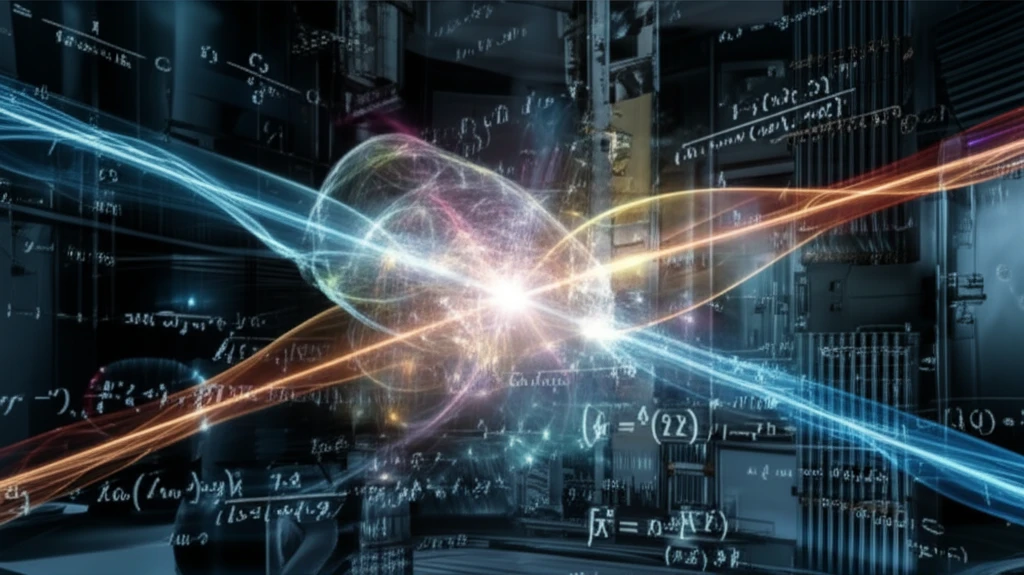
Unlocking the Secrets of Particle Behavior: How the T-Model is Revolutionizing Our Understanding of Bose-Einstein Correlations
"Delving into the intricacies of particle physics, this article explores how the T-model provides new insights into the behavior of identical bosons, offering a fresh perspective on their interactions and correlations."
In the realm of particle physics, understanding the behavior of particles and their interactions is paramount. Among the many phenomena that scientists study, Bose-Einstein correlations (BEC) hold a special place. These correlations, observed between identical bosons, provide valuable insights into the fundamental forces at play within hadronic decays and high-energy interactions.
Recent research has focused on a specific model known as the T-model, which seeks to describe and explain these Bose-Einstein correlations. This model has shown promise in capturing the intricacies of particle behavior, particularly in the context of hadronic Z decays and proton-proton (pp) interactions at the TeV scale. This article will delve into the findings of recent studies using the T-model, highlighting its capabilities and limitations in explaining experimental data.
By exploring the T-model's ability to describe BEC under various conditions, we aim to provide a clearer understanding of its significance in the field of particle physics. We'll discuss how this model helps scientists analyze the dependence of BEC on factors such as track multiplicity, transverse momentum, and rapidity, offering a comprehensive view of its applications and contributions to our knowledge of particle interactions.
What is the T-Model and Why is it Important?

The T-model is a theoretical framework used to describe Bose-Einstein correlations, which occur between identical bosons. These correlations arise due to the quantum mechanical principle that identical bosons tend to cluster together. The T-model provides a mathematical description of this clustering effect, allowing physicists to make predictions about particle behavior in various high-energy environments.
- The T-model helps describe the subtle clustering behavior of identical bosons, offering insights into particle interactions.
- Unlike other models, the T-model accounts for both the correlation peak and the anti-correlation region (BEAC), providing a more complete picture of particle behavior.
- By mathematically describing particle interactions, the T-model enables physicists to predict particle behavior in high-energy environments.
The Future of the T-Model in Particle Physics
While the T-model has shown promise in describing Bose-Einstein correlations, it is not without its limitations. One notable shortcoming is its assumption that R2 depends only on the magnitude of the momentum difference, Q, and not on its components. However, experimental evidence suggests that this is not always the case, indicating that the model may need further refinement.
Despite these limitations, the T-model remains a valuable tool for exploring the intricacies of particle behavior. Its ability to capture both the correlation peak and the anti-correlation region makes it a unique and powerful framework for analyzing experimental data. Future research may focus on addressing its shortcomings and extending its applicability to a wider range of high-energy interactions.
As experimental techniques continue to improve and new data become available, the T-model will likely play an increasingly important role in advancing our understanding of Bose-Einstein correlations. By combining theoretical insights with experimental observations, physicists can continue to refine and improve the T-model, unlocking new secrets of particle behavior and furthering our knowledge of the fundamental forces of nature.
